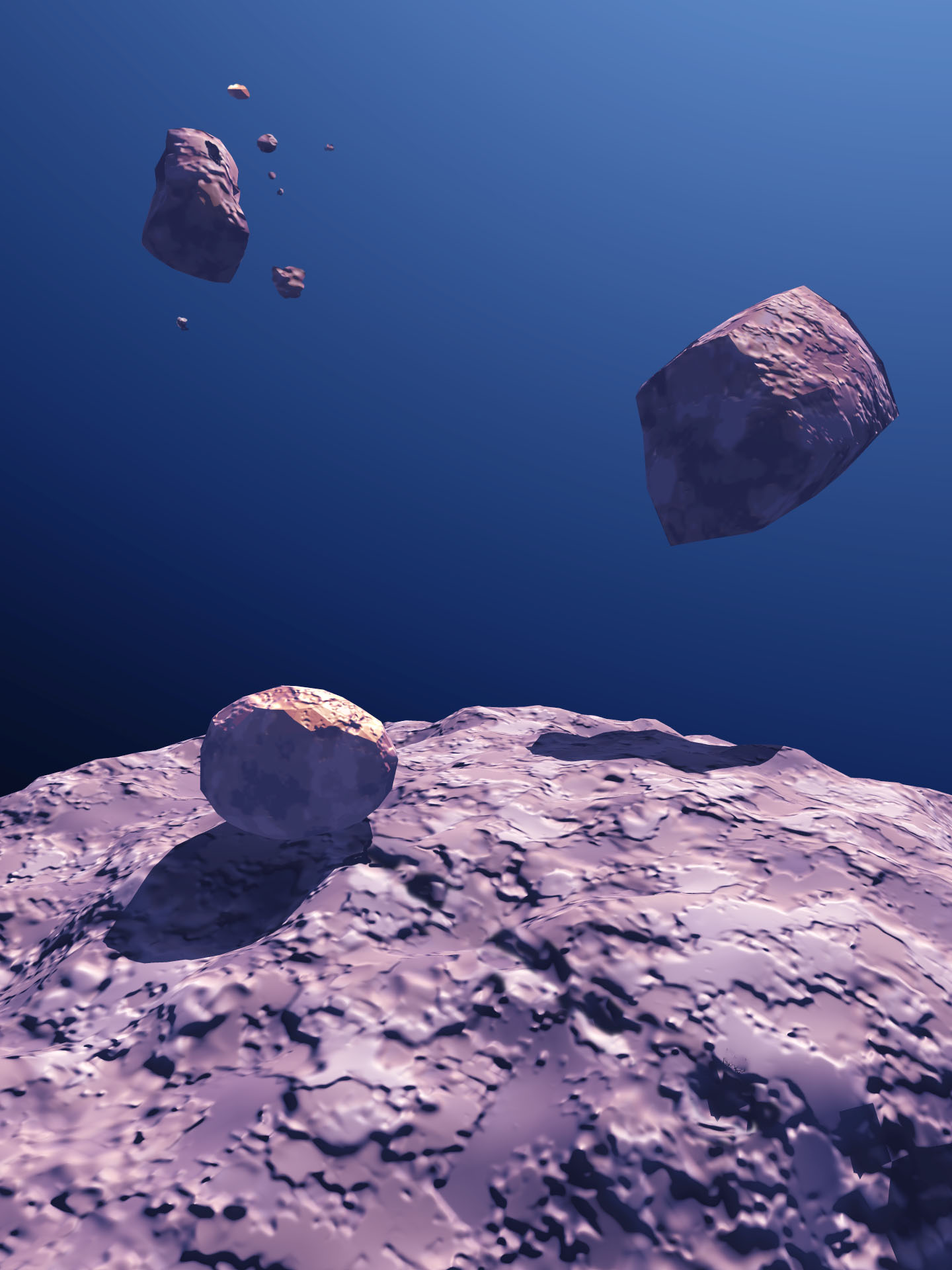Status of 'The NEAR Challenge'
Tom Van Flandern, 21 June, 1999
We reported in our last issue that it is apparent that Eros has an extremely irregular shape. It looks like a bent icicle at some orientations. That raises the question whether any stable orbits exist for such an irregular gravity field. That question has been answered in the negative for the most likely satellite orbits, those with orbital motion near synchronous with the rotation of the primary asteroid. See, e.g., D.J. Scheeres, “Analysis of orbital motion around 433 Eros, J.Astronaut.Sci. 43 #4, 427-452 (1995); and D.J. Scheeres, S.J. Ostro, R.S. Hudson, R.A. Werner, “Orbits close to asteroid 4769 Castalia”, Icarus 121, 67-87 (1996). The most common fate of objects in unstable orbits is to impact gently on the surface, usually at a grazing angle, followed by rolling until the orbital angular momentum (from orbital speeds of typically a few meters per second) is dissipated, then coming to rest on the surface. [See graphic by Boris Starosta.]

Boris Starosta's graphic showing an asteroid with several satellites is reproduced here at 7% of original size. Click image to view it at 100% [272 KB]. A smaller 25% size [33 KB] image is also available. Used with permission of the artist at <http://www.starosta.com>
The chances of intact objects coming to rest on the surface are nil except for satellites because the typical relative speeds between field asteroids are of order 5 km/s. Such speeds would result in highly destructive, crater-forming impacts. So finding surface "satellites", especially with tell-tale roll marks, when the NEAR spacecraft goes into orbit around Eros next year is still a good way to distinguish between the standard model and the exploded planet hypothesis. Stable orbits do exist beyond about 40 km from the primary, and for some retrograde orbits. So actual satellites in orbit may yet be found, although tidal forces would evolve such orbits rapidly, so that only small masses might be expected to survive to the present.
